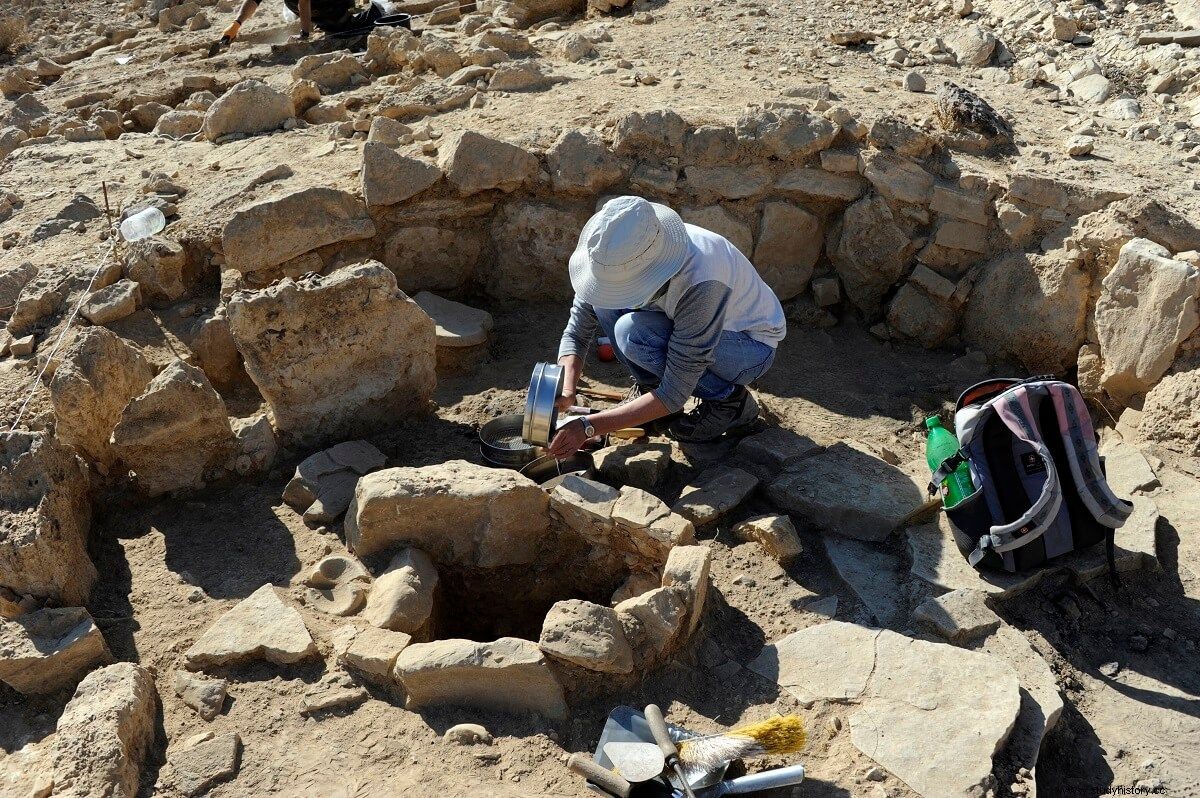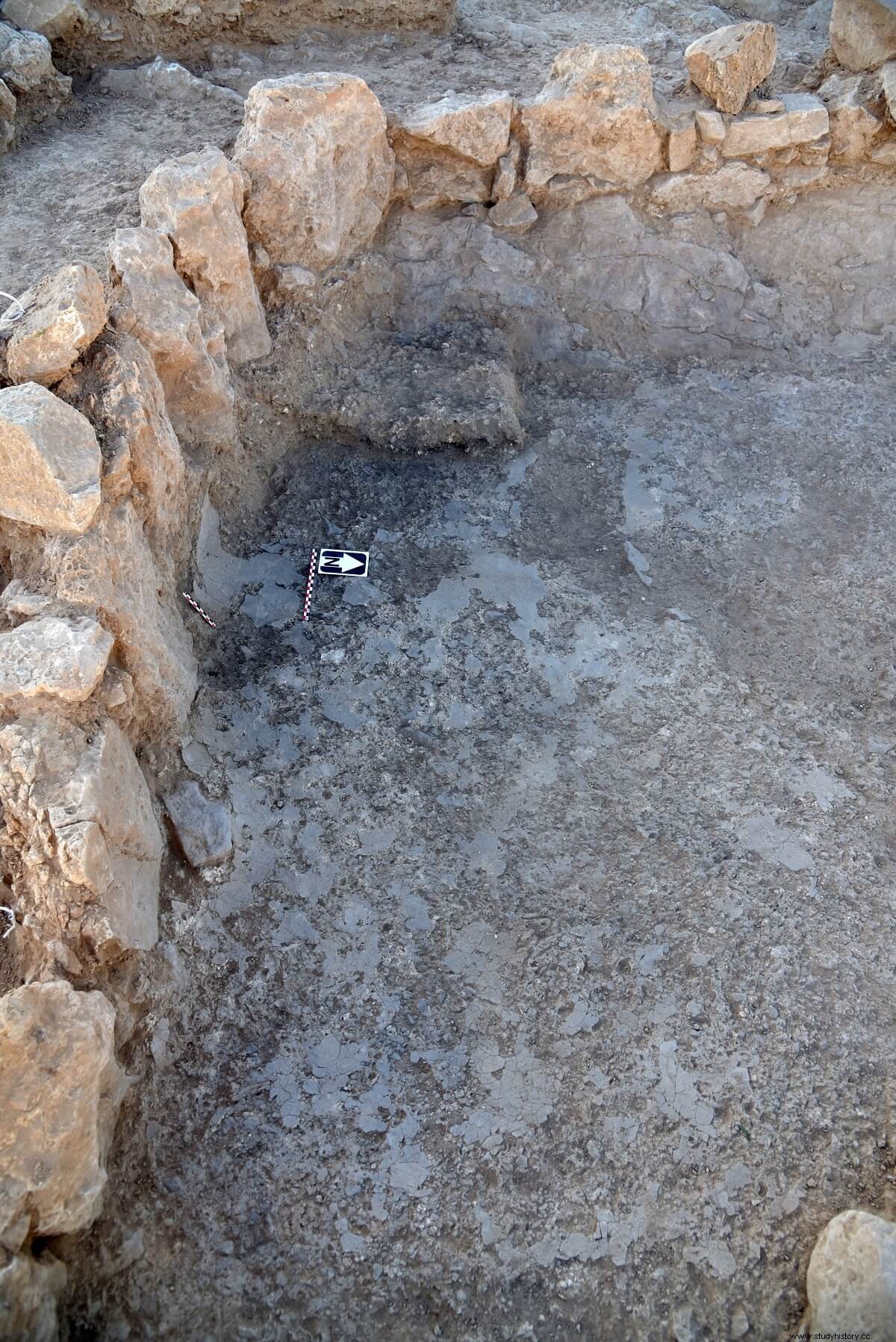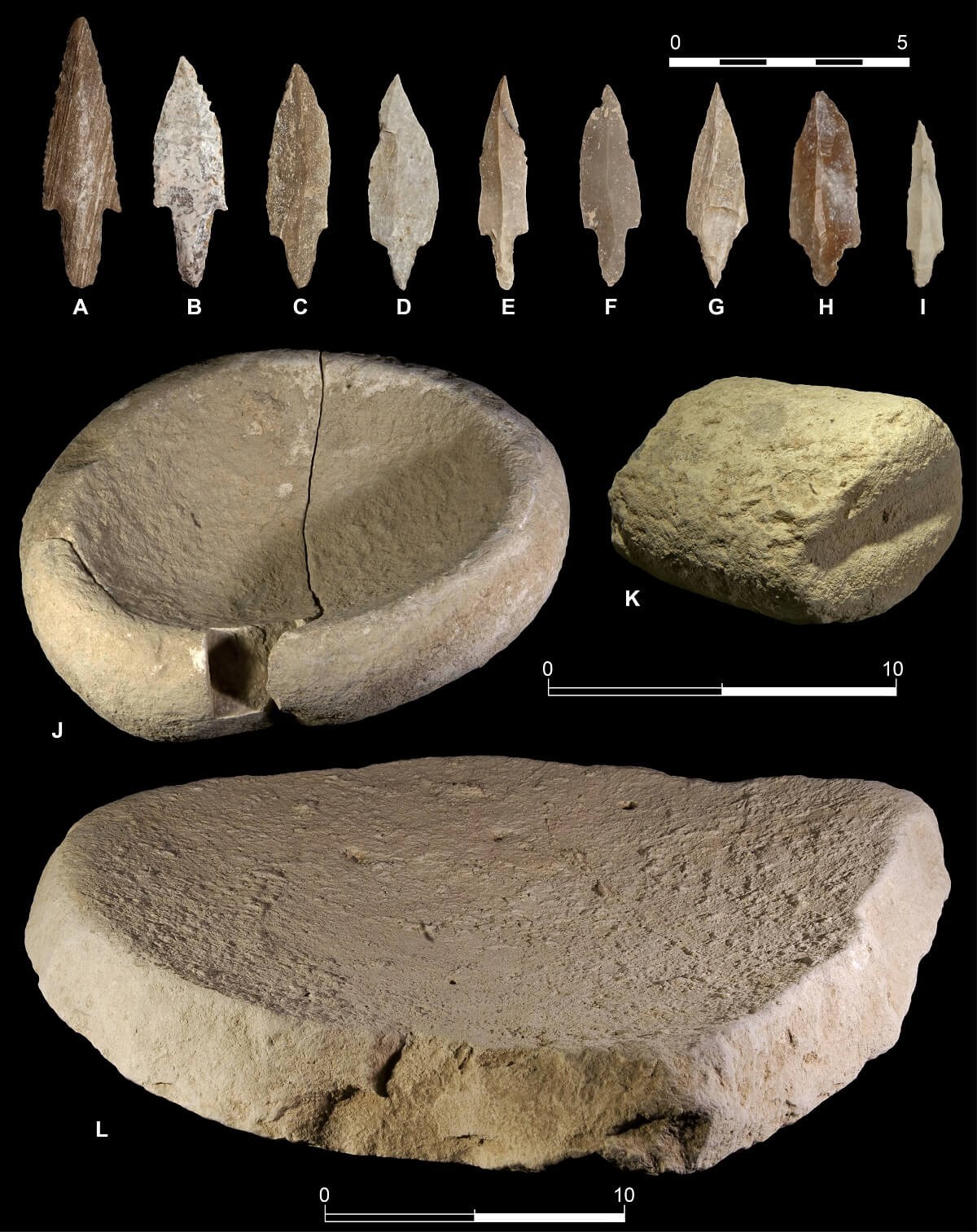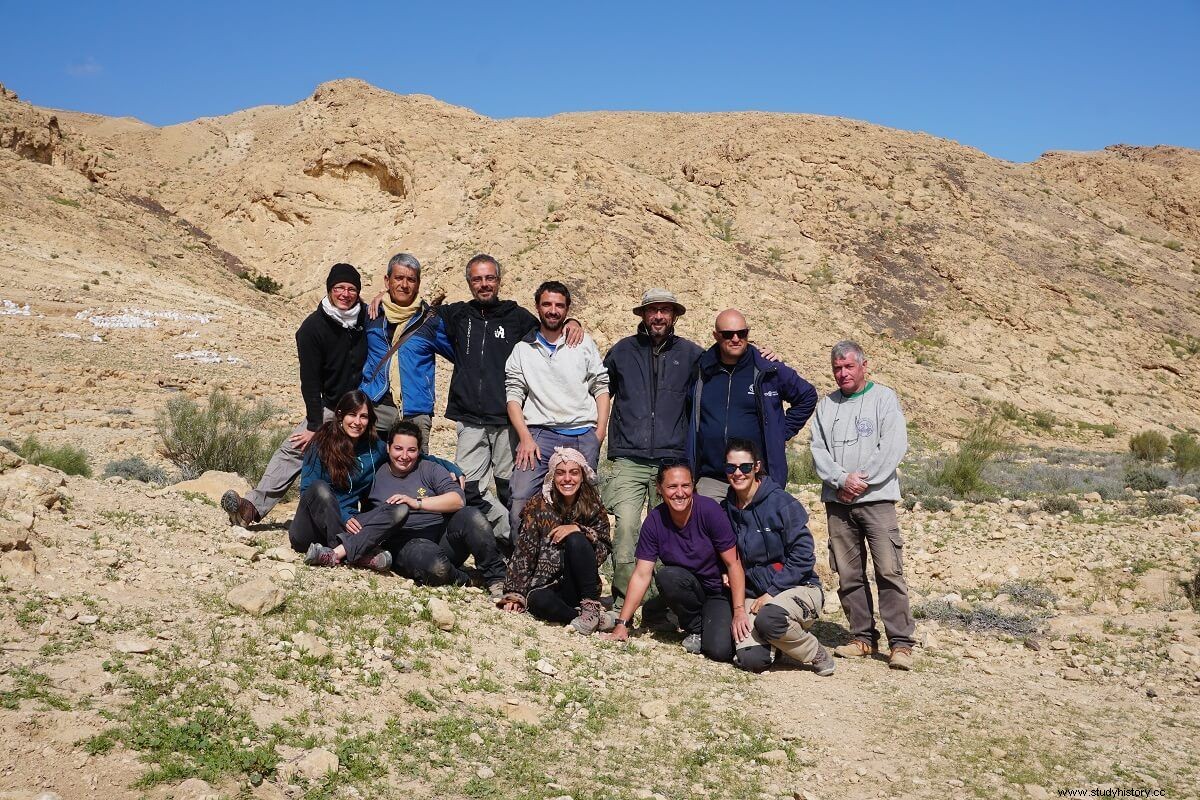
During the first half of the 8th millennium cal . ANE, agriculture was expanding rapidly throughout much of the Fertile Crescent . Despite the successful diffusion of this new way of life based on the exploitation of a series of domestic plants and animals, there were communities that, in the arid margins of this macro-region, followed a cultural development different from that observed in most of Próximo. East and continued to subsist from hunting and gathering. The coexistence of these two ways of life at the dawn of agriculture and livestock farming is well documented in some areas of the Near East, although in general it has aroused relatively less interest in the scientific community, which has mainly focused its efforts on the study of the origins, diffusion and socioeconomic transformations associated with the neolithization process .
The area comprised of the Judean highlands, the Negev desert, and the lower Jordan River valley , was formed about 10,000 years ago, during the Preceramic Neolithic B , the southern “border” between the large agricultural and livestock towns located in the wetter areas of the Mediterranean climate, to the north, and the hunter-gatherer communities that inhabited the Negev and Sinai deserts, to the south. In this way, the northern fringe of the Negev constitutes an ideal region for the study of these hunter-gatherer communities, traditionally defined as small bands with high mobility residential and with a subsistence based mainly on gazelle hunting, as well as to identify what interaction and contacts there were, if any, with neighboring agricultural communities, aspects totally unknown to date.
Archaeological campaigns in Nahal Efe
To this end, since 2015, a team of Spanish-Israeli archaeologists has been working at the Neolithic site of Nahal Efe , in the northeast sector of the Negev desert, in Israel. The five excavation campaigns that have been carried out to date are providing a large amount of new data on different facets of these hunter-gatherer communities, some of them completely new.

First of all, the excavations carried out have made it possible to determine that the Nahal Efe site corresponds to a hunter-gatherer settlement dating from the first half of the 8th millennium cal. ANE (Middle Preceramic Neolithic B) and that it would be the largest of this time for the Negev and Sinai area. It is calculated that it could have an estimated extension of about 2000 m 2 , thus tripling that of the largest contemporary hunter-gatherer villages known in that region (eg Nahal Reuel or Nahal Issaron).
So far, a set of seven semi-subterranean cabins have been discovered and fully or partially excavated , circular or semicircular in plan and between 3-5 m in diameter, as well as their associated outdoor areas and adjoining structures. These buildings are in an excellent state of preservation, with preserved walls up to a meter high being documented. Several very similar circular structures are partially visible on the surface in a large part of the hill where the site is located, constituting what appears to be a large residential area of Preceramic Neolithic B structured on different terraced levels of the slope, following a north-south axis. . In general terms, these buildings are similar to the so-called honeycomb architecture documented in other sites of the middle and recent PPNB of the Negev and Sinai (Nahal Karkom, Nahal Reuel, Nahal Issaron and Wadi Jibba) and in this sense Nahal Efe seems to be one of the northernmost testimonies of the distinctive (circular) architectural tradition that persisted during the Neolithic in desert areas, while rectangular architecture was already the norm in the large agricultural towns of the Mediterranean region and Transjordan to the north. However, this circular architecture in Nahal Efe presents a complexity and dimensions that are unparalleled in the region. This singular architectural complexity has its maximum expression in the presence of floors plastered with lime mortar in three of the seven excavated buildings (of beaten earth or paved the rest). The presence of lime soils in the Negev region (one of them partially painted red!) is something completely new and exceptional for different reasons. In the first place, because the preparation of the lime mortar implies the abundant use of two natural resources that are very scarce in the desert, wood to burn the limestone and water to prepare the lime mortar. The second reason is that the plastering of floors with lime mortar indicates a considerable labor investment in the construction and maintenance of residential buildings, an aspect totally in keeping with the architectural complexity observed in the site, but which does not fit the usual definition of the hunter gatherers of the Negev (small, highly mobile groups living in ephemeral villages). Thirdly, the preparation and use of lime in the construction of buildings has traditionally been considered a characteristic technology of the rectangular architecture of the large agricultural villages of the more humid areas to the north during Preceramic Neolithic B, where it was widely used, but not to the circular architecture of desert regions.

Another remarkable aspect of the Nahal Efe site is that , although it seems that hunting would represent a fundamental activity within the framework of the subsistence strategies of this community (abundance of projectile points and scarce remains of fauna, but exclusively wild), the evidence of the use and processing of plants, probably including cereals, are also abundant and diverse (stone mills and shiny sickle leaves). However, at the moment we cannot specify which plant species they would be consuming or how important the consumption of plants would be in the livelihood of the community.
Finally, another important novelty that the site has offered us in the last campaign has been the discovery of a grave inside one of the buildings, in its abandonment phase. It has been something totally unexpected and it is the first evidence we have about the funerary practices of the hunter gatherers who inhabited the Negev during the Preceramic Neolithic B, shedding some light on an aspect of these communities, the funerary practices, totally unknown. to date.

A site that forces us to reformulate theories
In conclusion, our investigations at the Nahal Efe site force us to reformulate or reconsider significantly some aspects of the current model for the Neolithic of the Negev and Sinai region. The hunter-gatherer settlements that populated the less arid northern fringe could have been significantly larger in size than previously proposed. In addition, in the case of Nahal Efe, due to its size and architectural characteristics (with lime plastered floors), there are sufficient elements to suggest that in some cases it could be permanent or semi-permanent towns and not short-term settlements.
On the other hand, the Nahal Efe settlement presents the main cultural and material traits that have traditionally been used to define the Preceramic Neolithic B settlement of the Negev and Sinai regions (circular, compact, honeycomb-like architecture and a hunting-based subsistence), but with a complexity of circular architecture that brings it closer to large contemporary settlements across the Jordan Valley such as Shkarat Msaied and Ayn Abu Nukhayla. Even more interesting is that in Nahal Efe we have documented technologies and elements of material culture (lime soils and sickle leaves) characteristic of agricultural settlements in the more humid areas of the north such as Yiftahel, Motza, Abu Gosh or Jericho. All these data seem to indicate that the hunter-gatherer groups that populated the northern limit of the Negev were not alien to the neolithization process , in full diffusion phase during the 8th millennium cal. ANE, and that this less arid strip of the Negev constituted a true zone of contact, social interaction and technology and knowledge transfer between farmers and hunter-gatherers, as can be seen in the town of Nahal Efe where they adopted some of the innovations technological features most characteristic of agricultural towns, adapting them to the environmental circumstances in which they lived.
The archaeological work we are carrying out at the Nahal Efe site opens our eyes to a more complex and richer interpretation of the process of neolithization in the eastern Mediterranean of what we knew until now, with intermediate situations beyond the traditional dichotomy from which the phenomena of the origin and consolidation of agriculture and the continuity of the hunter way of life are usually explained -collector. Much remains to be learned.

The Nahal Efe project receives the support of the Ministry of Science and Innovation/European Regional Development Fund (NEONEG, PGC2018-096634-B-I00 and RYC-2016-21108), the Israel Science Foundation (Ref. 345/18), the PALARQ Foundation, the Irene Levi Sala CARE Archaeological Foundation, the Higher Council for Scientific Research (PIAR program), the Israel Antiquities Authority, the Center de Recherche Français à Jérusalem and the Department of Culture of the Generalitat de Catalunya (SGR-2017-995).
